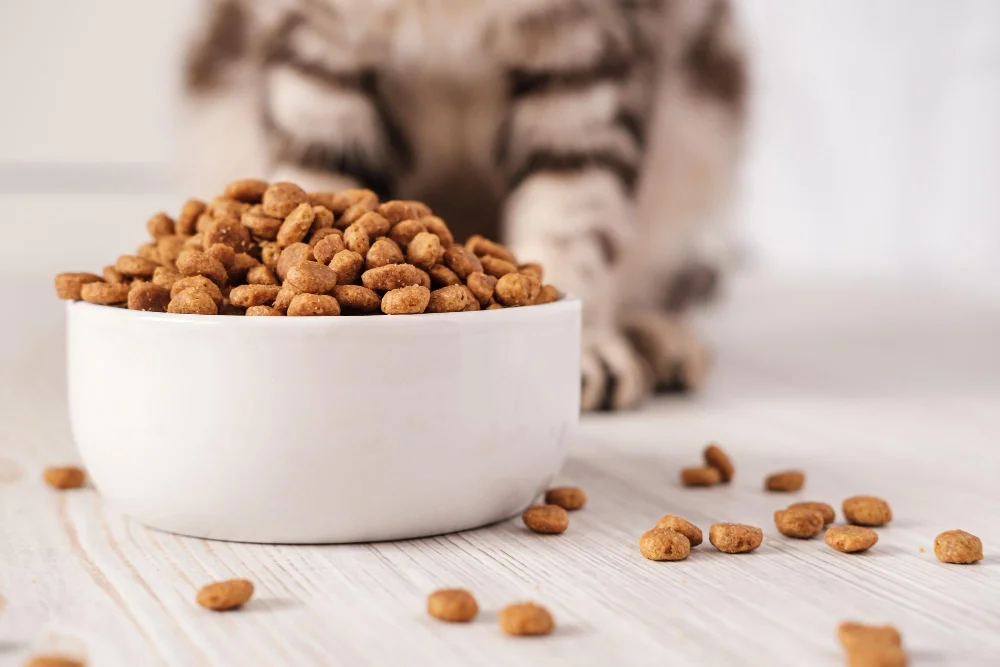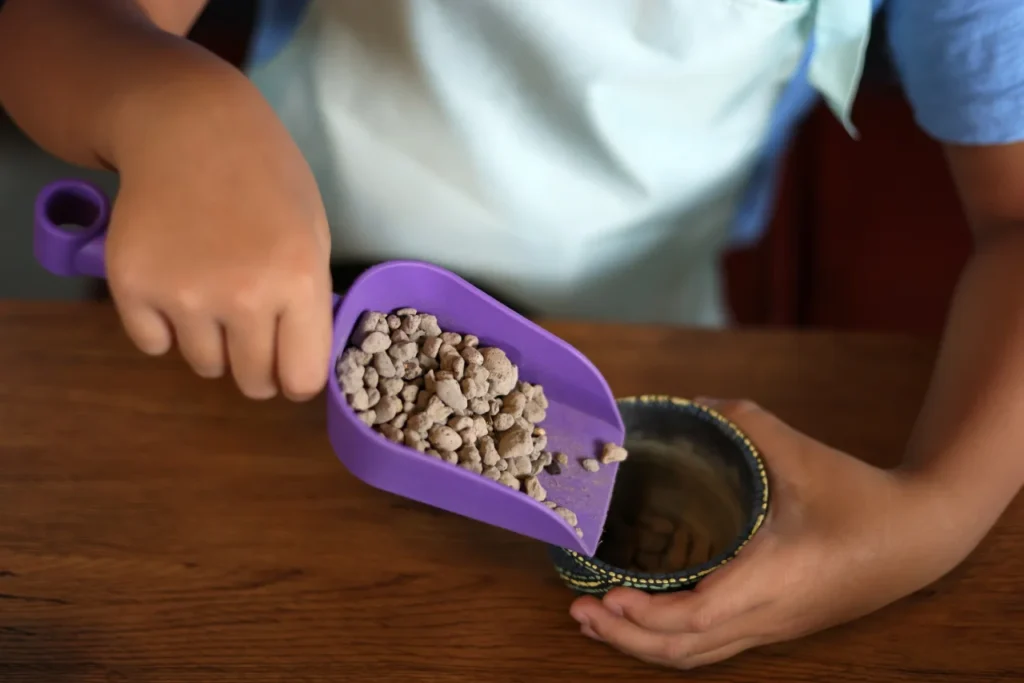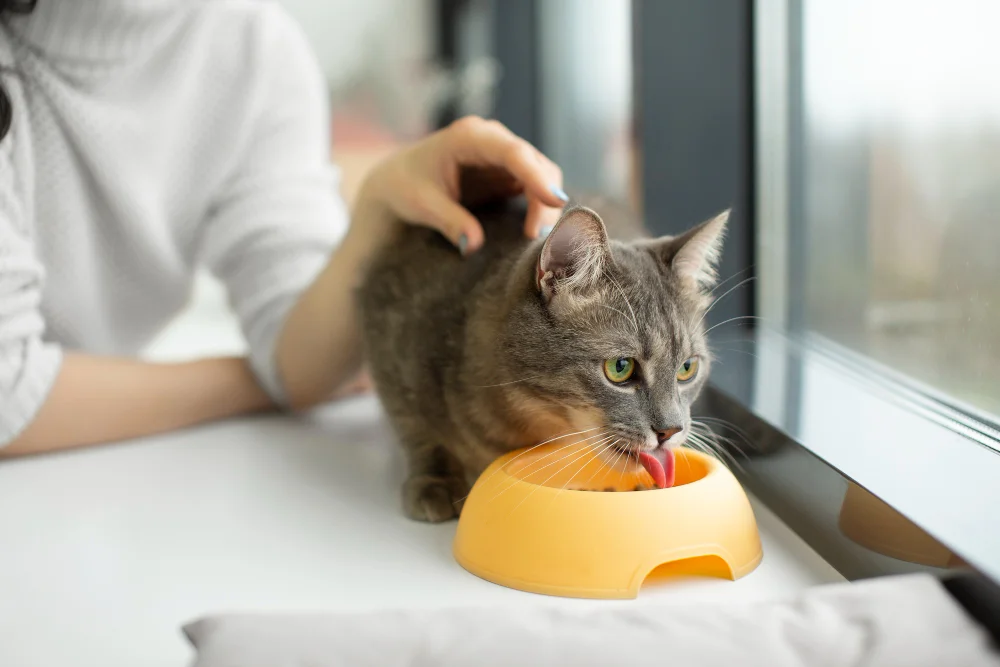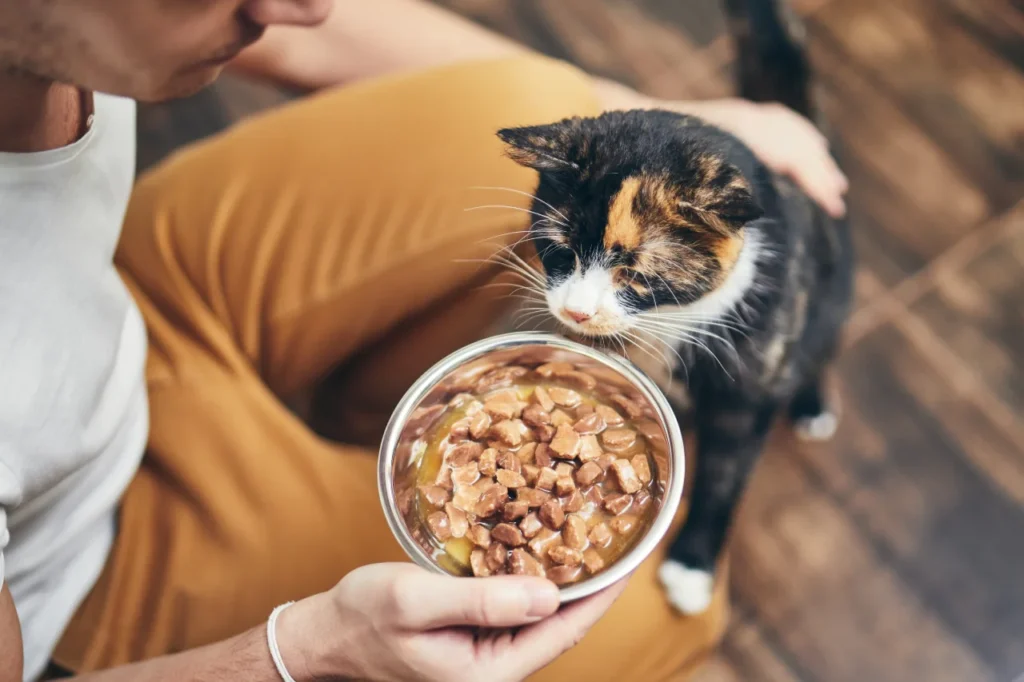Does your indoor cat often vomit after meals, avoid their food bowl, or leave behind unpleasant surprises outside the litter box? If so then you are not alone. Many cat owners struggle with finding a diet that suits their feline’s sensitive digestion even though I faced the same problem but in this guide I also give you its solution.
Indoor cats, in particular, are more prone to digestive issues because of their limited activity, exposure to stressors, and unique dietary needs. This guide is here to help you discover the best dry cat food for indoor cats with sensitive stomachs, with expert-backed recommendations, nutritional tips, and vet-approved advice.
No matter if your cat is vomiting regularly, has diarrhea, or just does not seem interested in food, finding the right dry food can make all the difference.
Why Do Indoor Cats Get Sensitive Stomachs?
Common Causes:
- Low physical activity: Leads to slower digestion.
- Hairball ingestion: Frequent grooming results in excess fur in the stomach.
- Stress or anxiety: Changes in environment, people, or other pets can disrupt gut health.
- Poor-quality food: Artificial additives, fillers, and low-grade meat can irritate the stomach.
Signs of Stomach Sensitivity:
- Vomiting or regurgitation after eating
- Loose stools or diarrhea
- Bad-smelling gas
- Loss of appetite
- Excessive licking or grooming
“Why does my indoor cat have a sensitive stomach?” It’s a common question, and it often comes down to their environment and diet. Thankfully, the right food can solve much of the problem.
What Makes Dry Cat Food Good for Sensitive Stomachs?
When choosing dry food for sensitive cats, look for the following:
Easily Digestible Proteins
Lean meats like chicken, turkey, or salmon help support digestion and muscle maintenance.
No Artificial Fillers
Avoid products with corn, soy, wheat, or by-products. These often trigger food intolerances or allergies.
Added Prebiotics & Probiotics
Ingredients like chicory root, beet pulp, and live probiotics balance the gut flora and ease digestion.
Small Kibble Size
Easier to chew and gentler on sensitive stomachs—especially for older cats.
Indoor Cats Have Unique Nutritional Needs
Your indoor cat is not chasing mice or roaming the neighborhood. Their lifestyle demands different nutrition:
- Low-calorie formulas prevent weight gain.
- Hairball control ingredients like natural fiber help with fur digestion.
- Omega-3 & Omega-6 fatty acids promote skin and coat health.
- High-protein, low-fat balance supports lean muscle.

Top 7 Best Dry Cat Foods for Indoor Cats with Sensitive Stomachs (2025 Picks)
1. Hill’s Science Diet Sensitive Stomach & Skin
- Key Ingredients: Chicken, brown rice, omega-6 fatty acids, vitamin E
- Why It Works: Vet-recommended formula that supports digestive health and shiny coat.
- Price: $84
- Where to Buy: Amazon, Chewy, PetSmart
2. Blue Buffalo Sensitive Stomach Indoor Cat Food
- Key Ingredients: Deboned chicken, oatmeal, pumpkin
- Why It Works: Natural, grain-free, and rich in fiber and probiotics.
- Price: $24
- Where to Buy: Petco, Chewy, Amazon
3. Purina Pro Plan Live Clear Sensitive Skin & Stomach
- Key Ingredients: Turkey, oatmeal, rice
- Why It Works: Allergen-reducing formula and highly digestible.
- Price: $37
- Where to Buy: Amazon, Petco
4. Royal Canin Digestive Care
- Key Ingredients: Chicken meal, rice, beet pulp
- Why It Works: Promotes optimal stool quality and gut flora.
- Price: $58
- Where to Buy: Vet clinics, Chewy, Amazon
5. Wellness CORE Digestive Health
- Key Ingredients: Turkey, peas, flaxseed, probiotics
- Why It Works: Grain-free and enhanced with digestive enzymes.
- Price: $25
- Where to Buy: Amazon, PetFlow
6. Iams Proactive Health Sensitive Digestion
- Key Ingredients: Turkey, beet pulp, fish oil
- Why It Works: Affordable, with good fiber and prebiotic blend.
- Price: $17
- Where to Buy: Walmart, Chewy, Amazon
7. Nutro Wholesome Essentials Indoor Cat Recipe
- Key Ingredients: Chicken, brown rice, sweet potato
- Why It Works: Clean label, no GMOs, and optimized for indoor cats.
- Price: $21
- Where to Buy: PetSmart, Amazon
Tips for Transitioning to a New Cat Food
You need to have patience and care when switching your cat to a new diet to avoid upsetting their digestive system. A gradual transition is essential. Start by mixing 25% of the new food with 75% of their current food for the first few days. Slowly increase the proportion of the new food over the course of 7 to 10 days, moving to a 50/50 blend, then 75/25, until your cat is fully adjusted to the new diet.
Closely monitor your cat’s behavior and digestion during this transition. Signs like vomiting, loose stools, refusal to eat, or lethargy may indicate an intolerance to the new food. It is also important to maintain access to fresh, clean water at all times, especially when feeding dry food, to help with hydration and digestion.
Clean the feeding bowls daily and avoid introducing other dietary changes simultaneously, such as new treats or supplements, as they could interfere with your assessment of how well your cat is tolerating the new food. A calm, consistent feeding environment can also make the transition smoother for more sensitive or anxious cats.


When to See a Vet About Your Cat’s Digestive Problems
Through dietary changes many digestive issues in cats can be managed. There are certain signs that should prompt a visit to the veterinarian. If your cat experiences persistent vomiting or diarrhea lasting more than 48 hours, it may indicate a more serious underlying issue, such as inflammatory bowel disease, parasites, or a food allergy that requires medical attention.
Weight loss, lethargy, or a sudden change in behavior are also red flags. These symptoms could point to chronic conditions that go beyond food sensitivity and require diagnostic testing. If you notice your cat eliminating outside the litter box, it might not be just a behavioral issue discomfort from digestive distress can also be a cause.
Blood in the stool, excessive drooling, or signs of pain during eating or defecation are all situations where immediate veterinary consultation is advised. Early intervention not only improves your cat’s comfort but can also prevent small problems from developing into serious health concerns. Remember, your vet is your best partner in ensuring your cat’s long-term digestive health.
What is the easiest dry food for cats to digest?
Foods with limited ingredients, real meat, and probiotics like Hill’s Science Diet or Blue Buffalo are top picks.
Can indoor cats get sensitive stomachs from stress?
Yes. Environmental stress, such as loud noises, new pets, or travel, can trigger stomach sensitivity.
Is grain-free better for sensitive cats?
Grain-free food can help, but not all grains are bad. Focus on quality of ingredients rather than the label alone.
How can I tell if my cat is allergic to their food?
Look for itching, vomiting, swollen paws, or diarrhea. If symptoms persist, consult a vet.
Conclusion
Indoor cats with sensitive stomachs need more than just any dry food they need a diet that’s gentle, nutritious, and tailored to their unique needs. Whether you are addressing occasional vomiting or ongoing stomach troubles, the best dry cat food for indoor cats with sensitive stomachs can lead to a happier, healthier pet.
Citation
Leeson, J., & McKnight, S. (2025, May 9). The best sensitive stomach cat food, with advice from veterinarians. Business Insider. https://www.businessinsider.com/guides/pets/best-cat-food-sensitive-stomach
For cats with sensitive-stomach. (n.d.). https://www.vetshop.co.uk/For-Cats-With/Sensitive-stomach
Barrington, V. a. P. B. K. (2025, June 6). 10 best healthy dry cat foods: Unbiased review- Cats.com. Cats.com. https://cats.com/best-dry-cat-food

